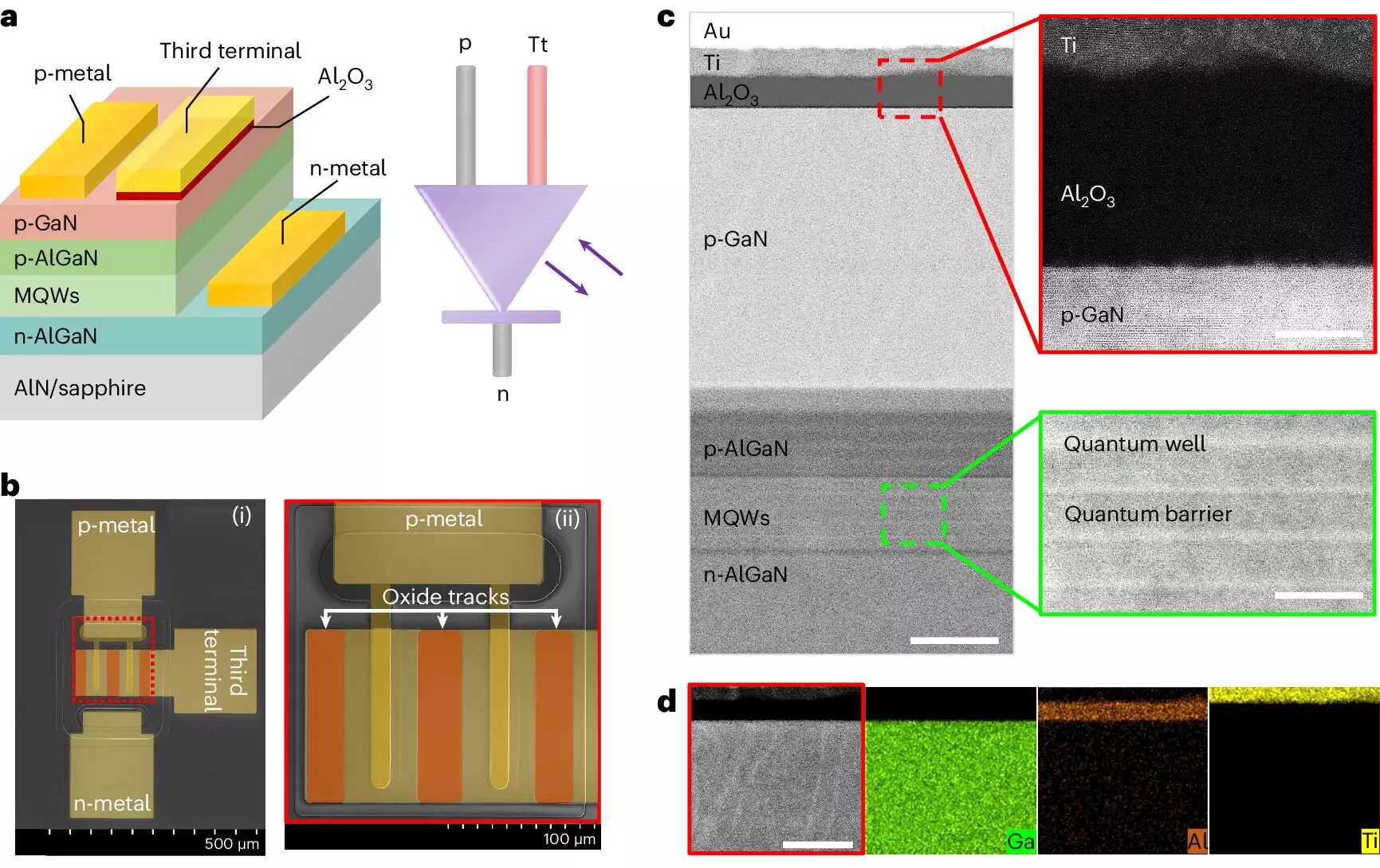In the realm of electronic components, two-terminal devices have long been the standard. However, these components have often posed limitations that hinder the overall performance and function of systems. Nonetheless, a groundbreaking development has emerged from the University of Science and Technology of China (USTC)’s iGAN Laboratory, spearheaded by Prof. Haiding Sun and his team of researchers. Their recent innovation introduces a new three-terminal diode capable of both emitting and detecting light, presenting a promising path towards highly efficient wireless communication and light-driven computing systems.
The three-terminal diode engineered by Sun and his team integrates a traditional gallium nitride-based p–n diode with an additional third terminal, consisting of a metal/Al2O3 dielectric layer directly applied to the p–GaN layer. This innovative design allows the device to function not only as a light emitter but also as a photodetector, significantly expanding its capabilities in optical wireless communication (OWC) applications and enabling the creation of optoelectronic logic gates for advanced computing technologies.
Initial testing of the three-terminal diode has revealed a remarkable enhancement in modulation bandwidth, surpassing current OWC systems utilizing standard light-emitting p–n diodes by over 64%. This substantial improvement signifies the potential for faster and more efficient data transmission methods. Moreover, the diode’s ability to seamlessly switch between emitter and detector modes offers a versatile and dual-functional architecture that can revolutionize the field of OWC technology.
Looking ahead, the newly developed diode holds immense promise for the fabrication of OWC technology capable of transmitting data at unprecedented speeds and facilitating the creation of advanced optically driven computing systems. As Prof. Haiding Sun and his colleagues continue to refine the performance of their diode, they are also exploring strategies to integrate it with other optoelectronic materials and systems. This ongoing research endeavor aims to further enhance the functionality and versatility of the diode, paving the way for the development of multifunctional and integrated electronic and optoelectronic systems on a broader scale.
The introduction of the three-terminal diode represents a significant breakthrough in the realm of optoelectronic devices. By challenging the conventional limitations of two-terminal devices and introducing a novel design that combines light-emitting and light-detecting capabilities, the researchers at USTC have opened up a new realm of possibilities for wireless communication and computing technologies. As this innovative technology continues to evolve and mature, its impact on the field of optoelectronics is poised to be profound and far-reaching.



Leave a Reply